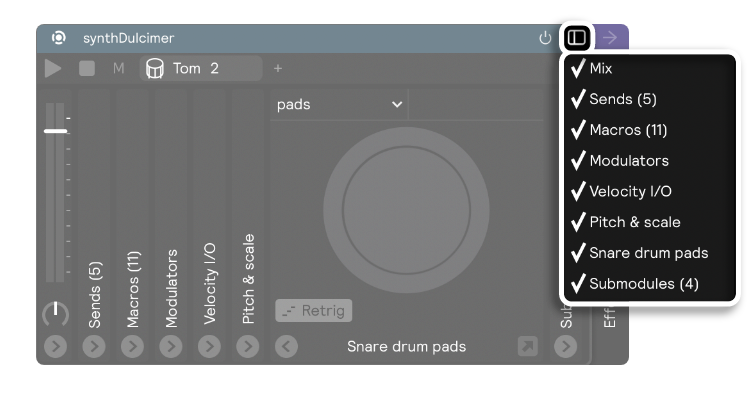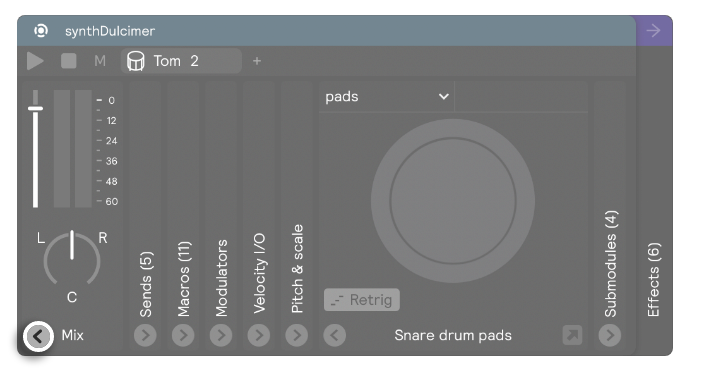Modules
What is a Module?
Modules are the building blocks of Sensory Percussion, so it's important to understand how they work in order to build your own sounds. This section will go over the different parts of a module, but to better understand the overall modular structure of the software, check out the software concepts section.
There are two kinds of modules used to build sounds in Sensory Percussion: Controllers and Generators
Controllers
Controller modules don't produce sound themselves; they just affect the relationship between other modules. There are six kinds of controllers, each of which performs a different action on all of the modules inside of it. Controllers can hold any other kind of module, whether it's a generator or another controller.
Generators
Generators, as you might guess from the name, generate sound. The most commonly found type of generator in our preset kits is the sampler. Unlike controllers, generators can't hold other modules, so they're always at the end of the modular chain.
Below is an example layer from the set Acedia. You can see how the leftmost controller (drum pads controller) contains another controller (note controller), which contains a generator (sampler). Since generators can't hold other modules, this sampler is the end of the chain:


Both controllers and generators can be found in the Build section of the library. You might also notice that this section includes Effects. Effects are not generators because they don't produce sound on their own, but they're also not controllers because they can't hold other modules. They're kindof in their own special category, which allows them to be placed on any module at any point in the chain. For more info on effects, check out the Effects page.
If you find that you need to set the same value to the same parameter across multiple different modules, you can save time with copy value to siblings. Set the parameter on one module, then right-click on the parameter and select copy value to X siblings. Then the value will be copied to all of the matching parameters within the same parent module.
Panels
Modules are made up of panels. These are smaller sections that provide different settings and functionality to each module. There are some panels that are common to all modules, for example the mix, macros, and velocity i/o panels.
You can show or hide various panels by clicking on the panel button on the top-right of the module.

Each panel can also be expanded or collapsed by clicking on the "open/close" arrow button on the bottom-left of the panel.

For more information on the different panels, check out the Panels page.
📄️ Input Filtering
An explanation of how input filtering works
🗃️ Panels
8 items
🗃️ Generators
3 items
🗃️ Controllers
7 items